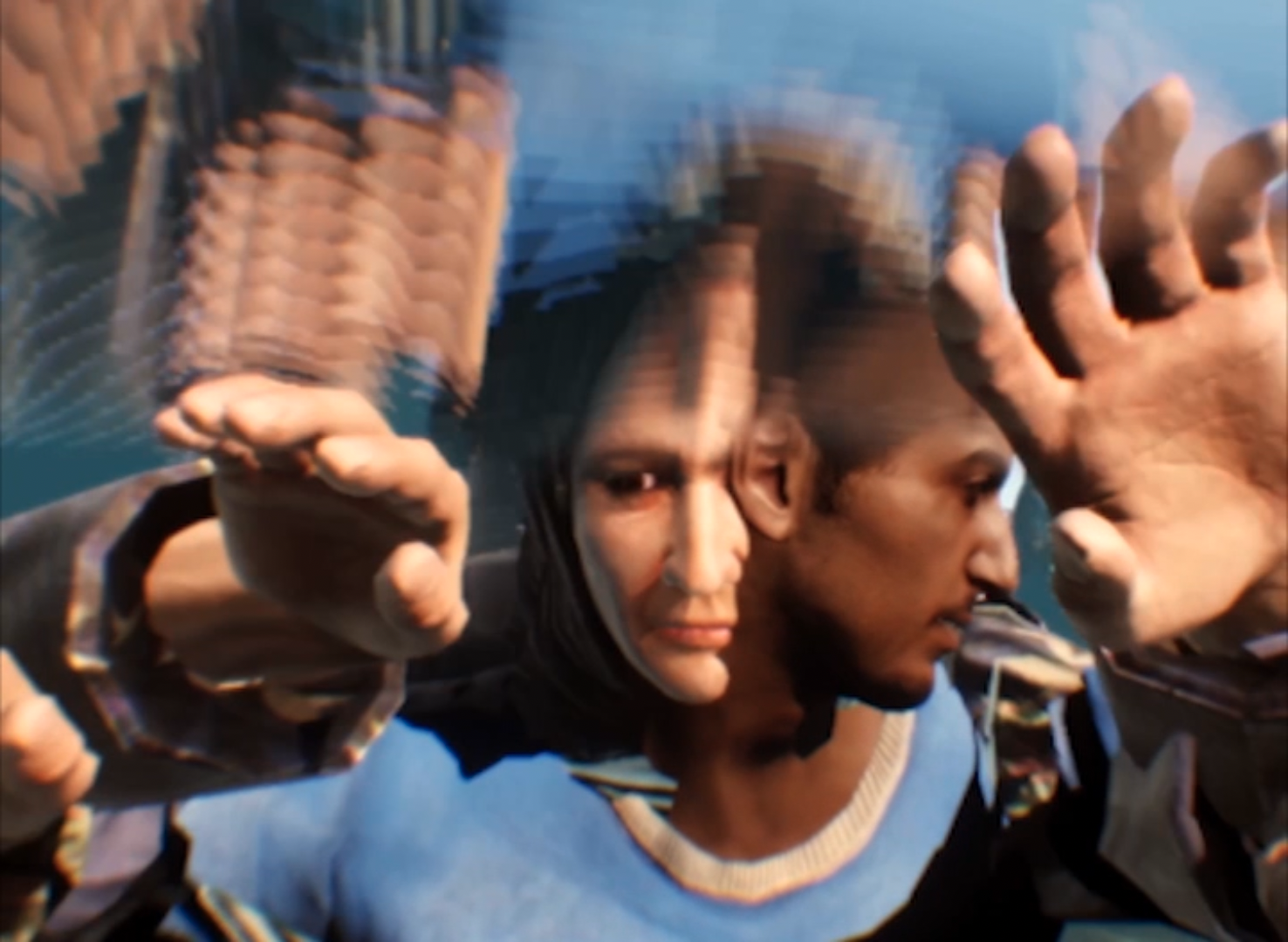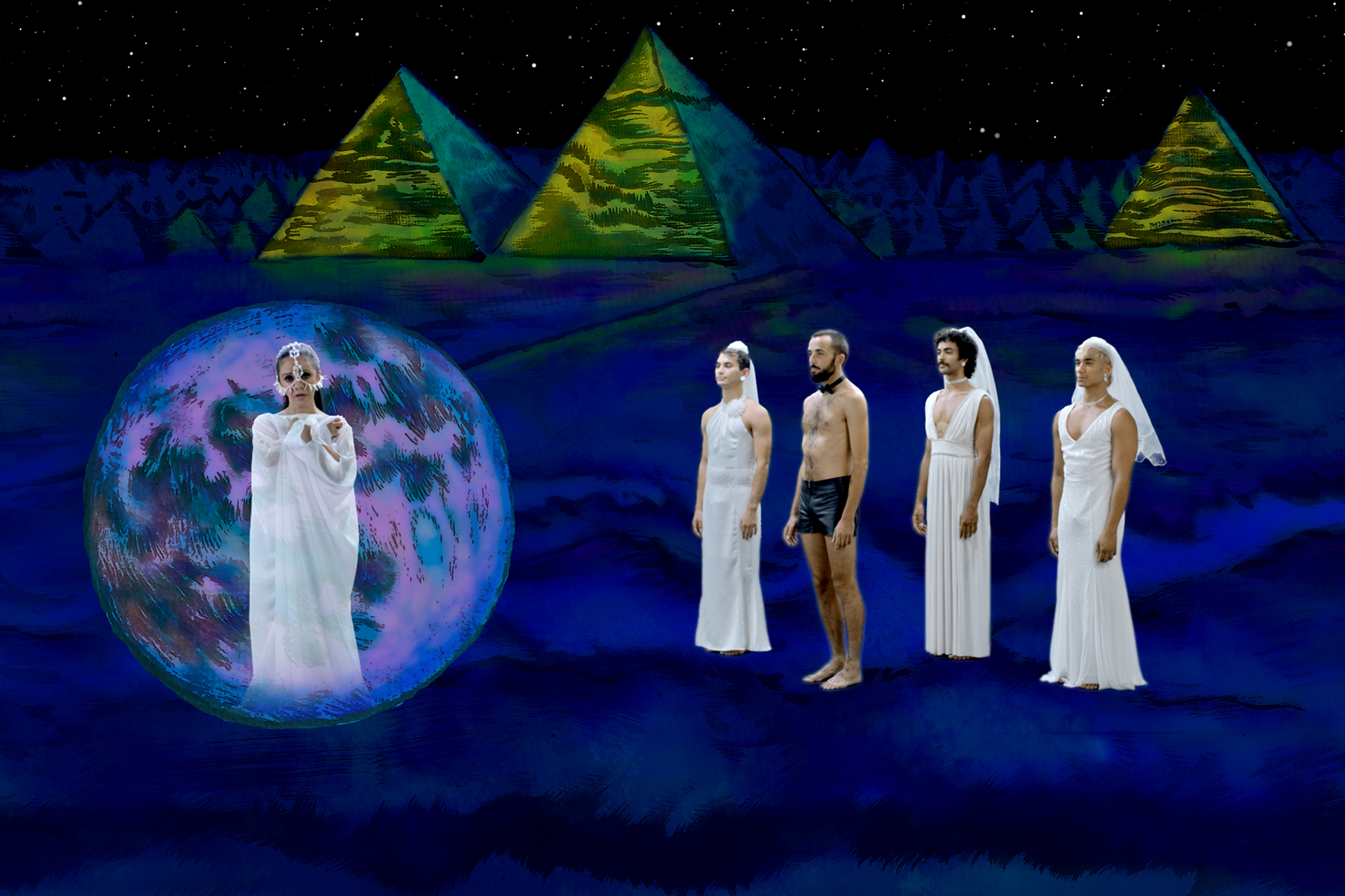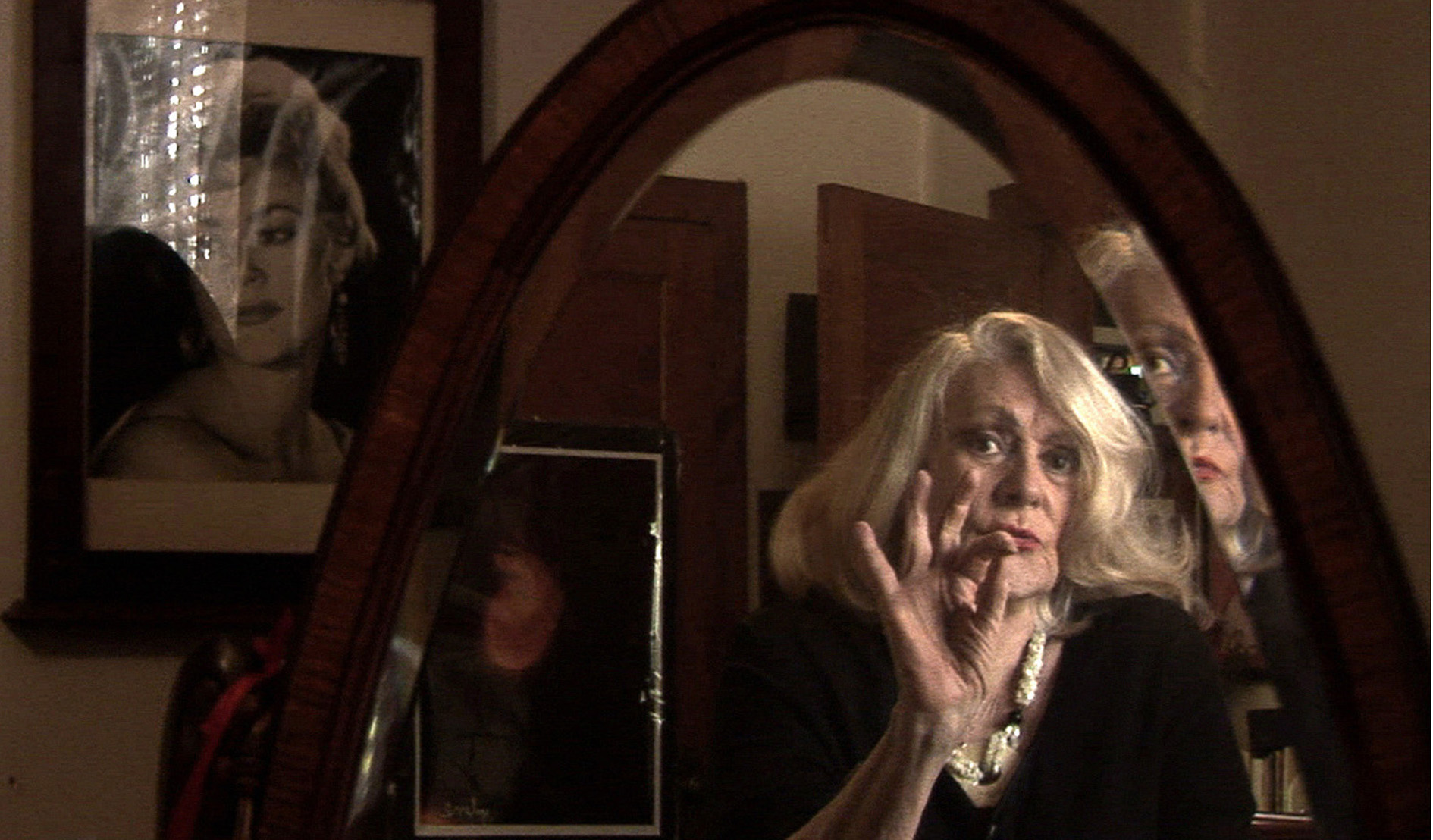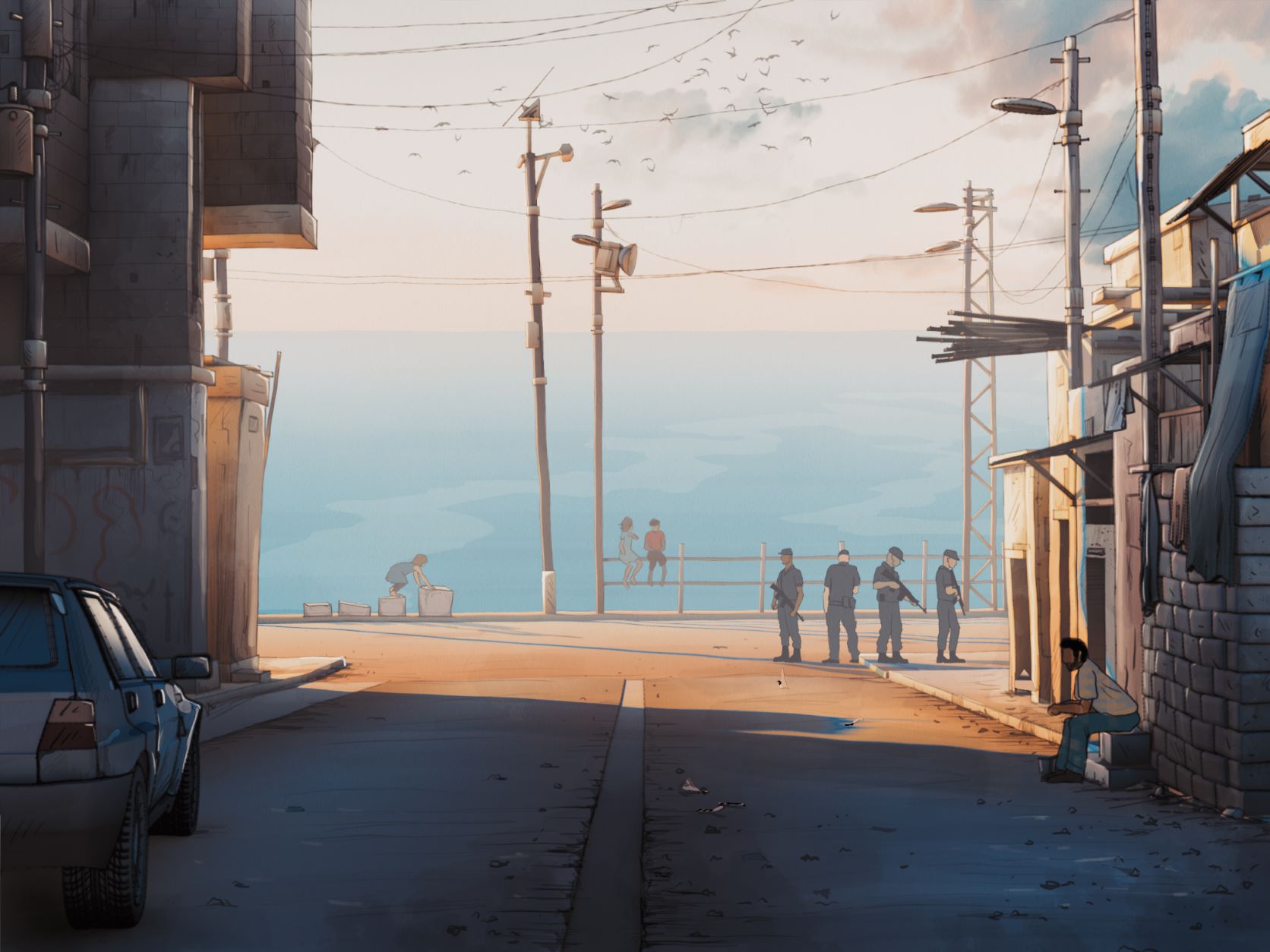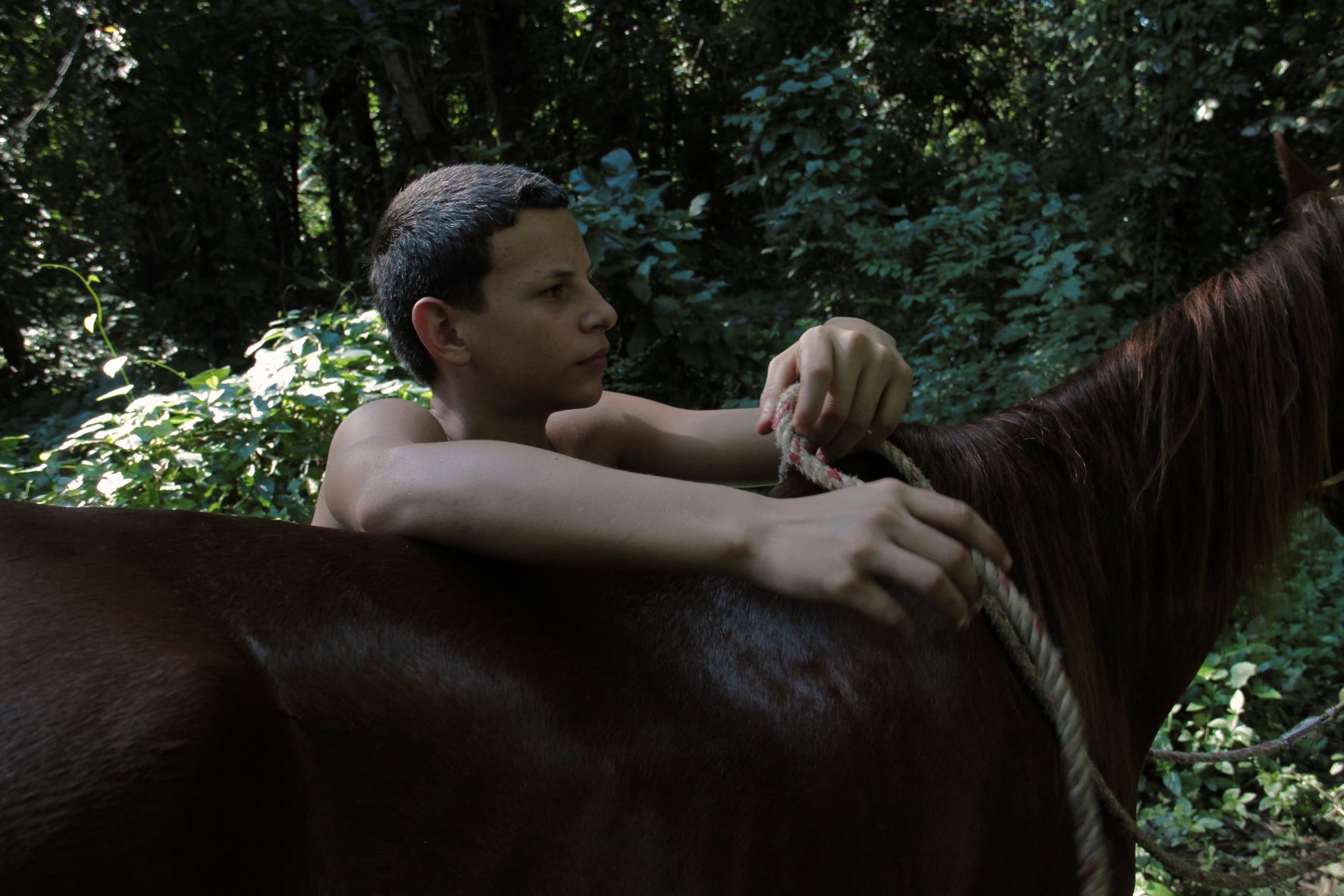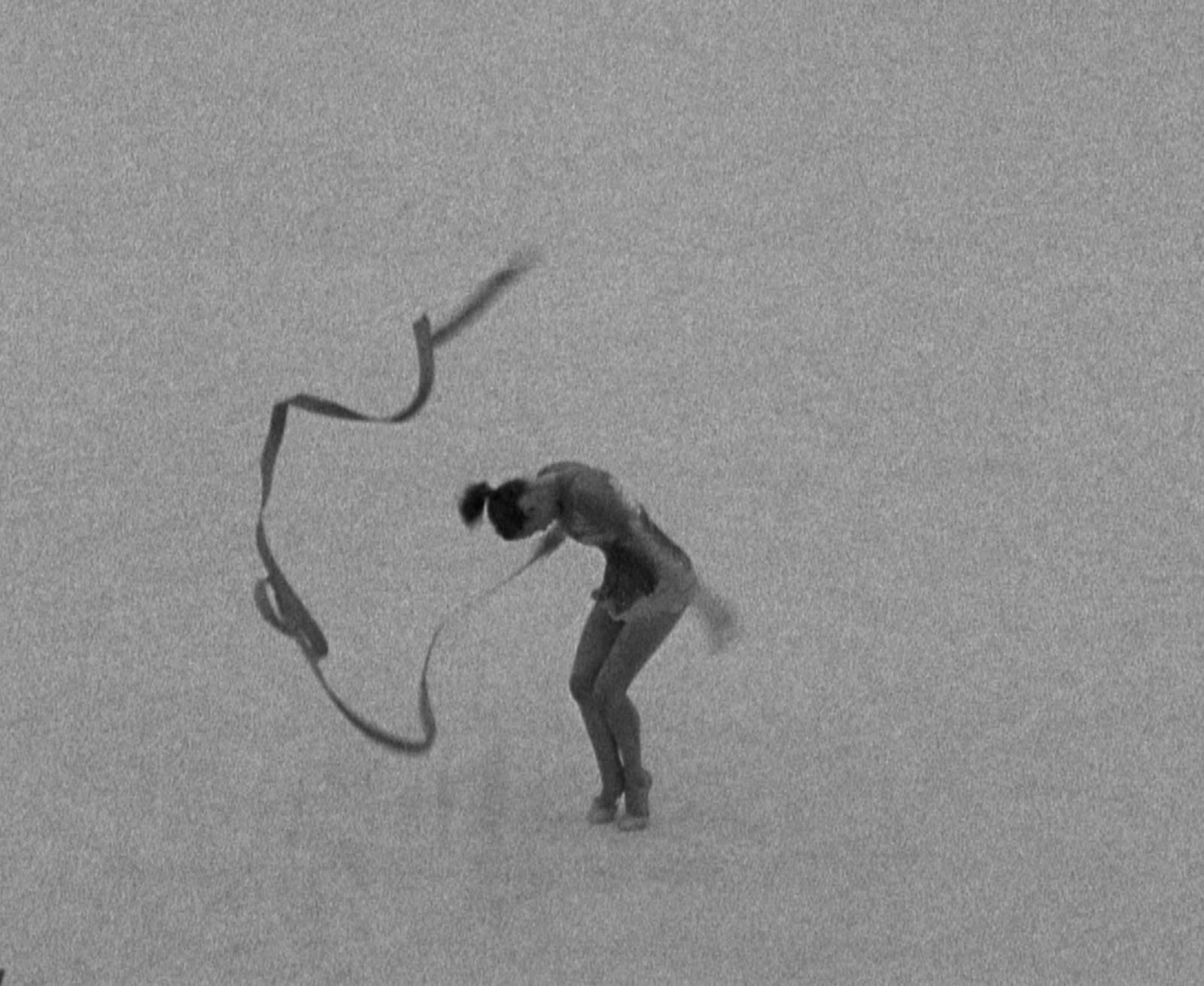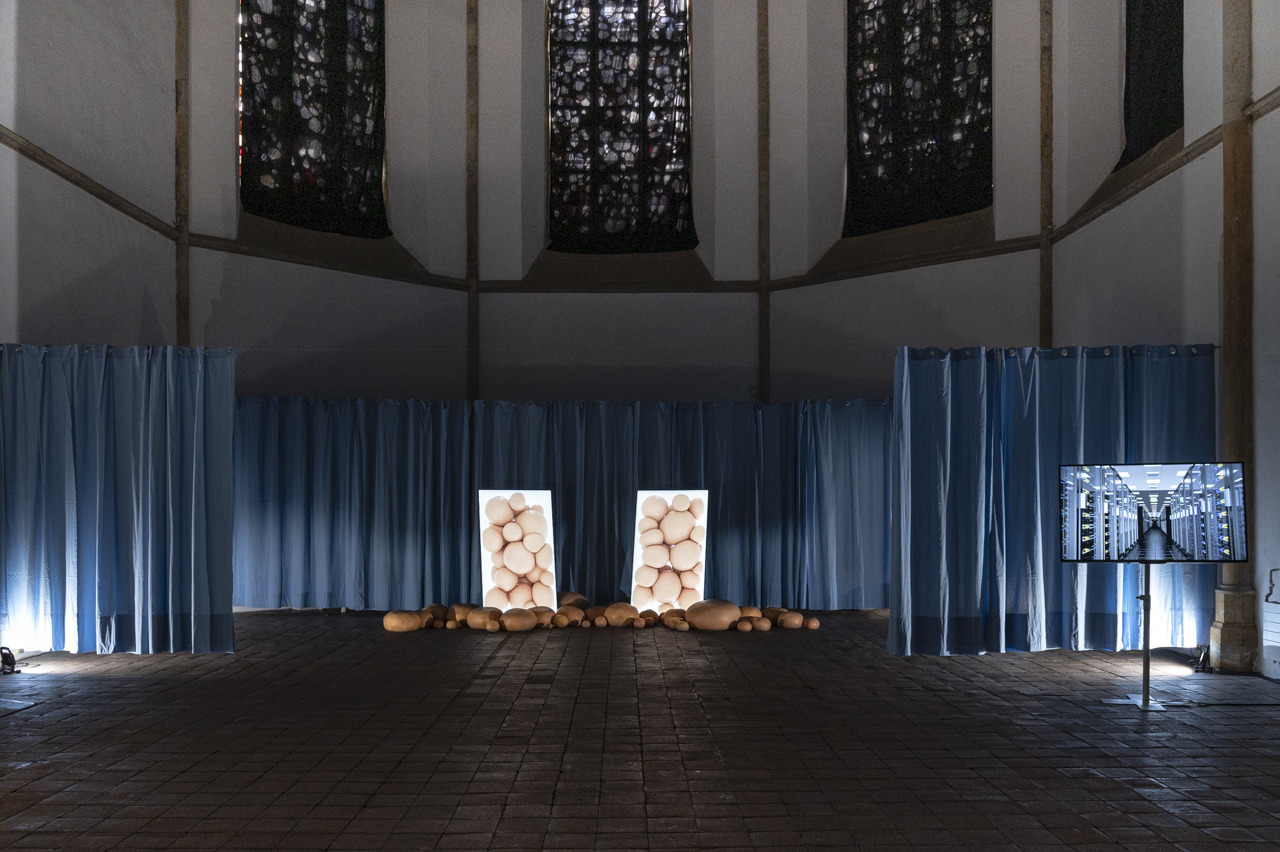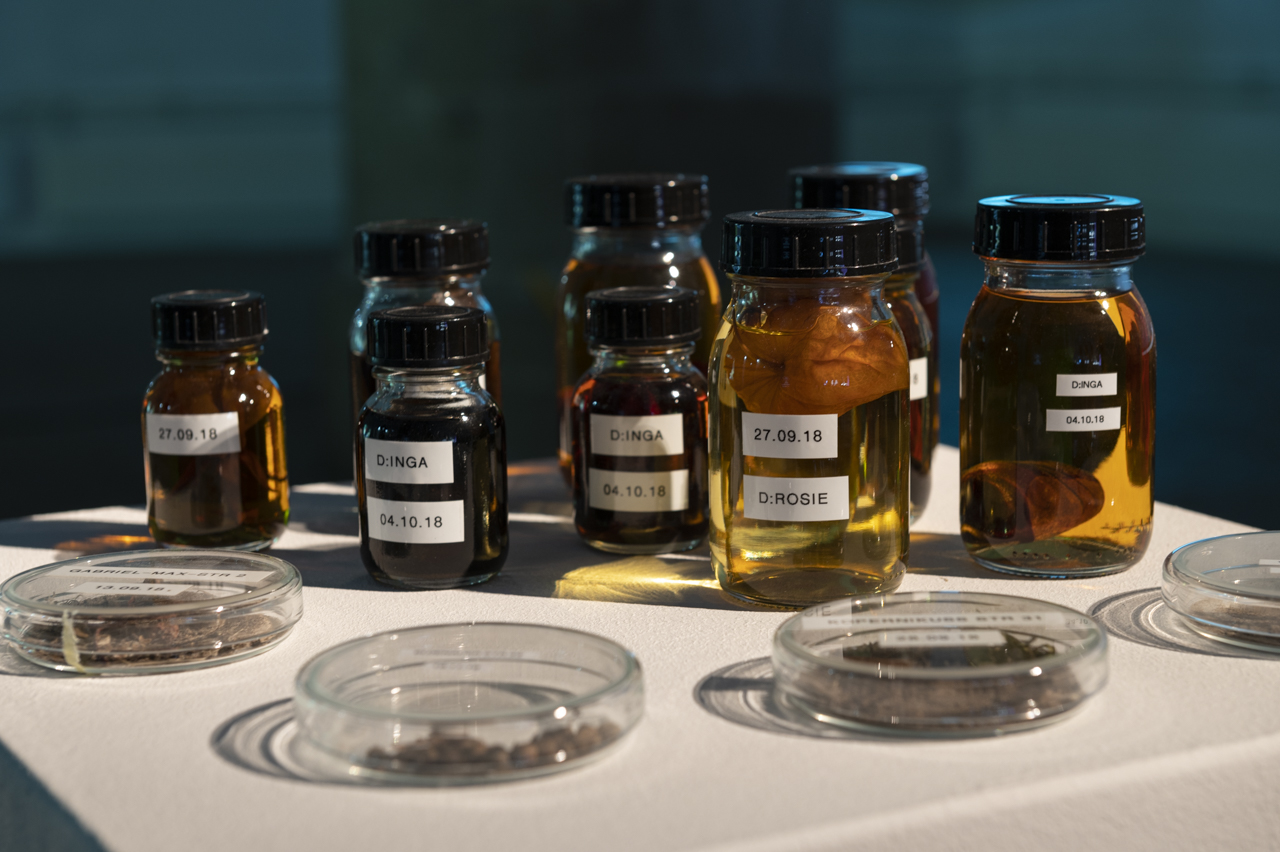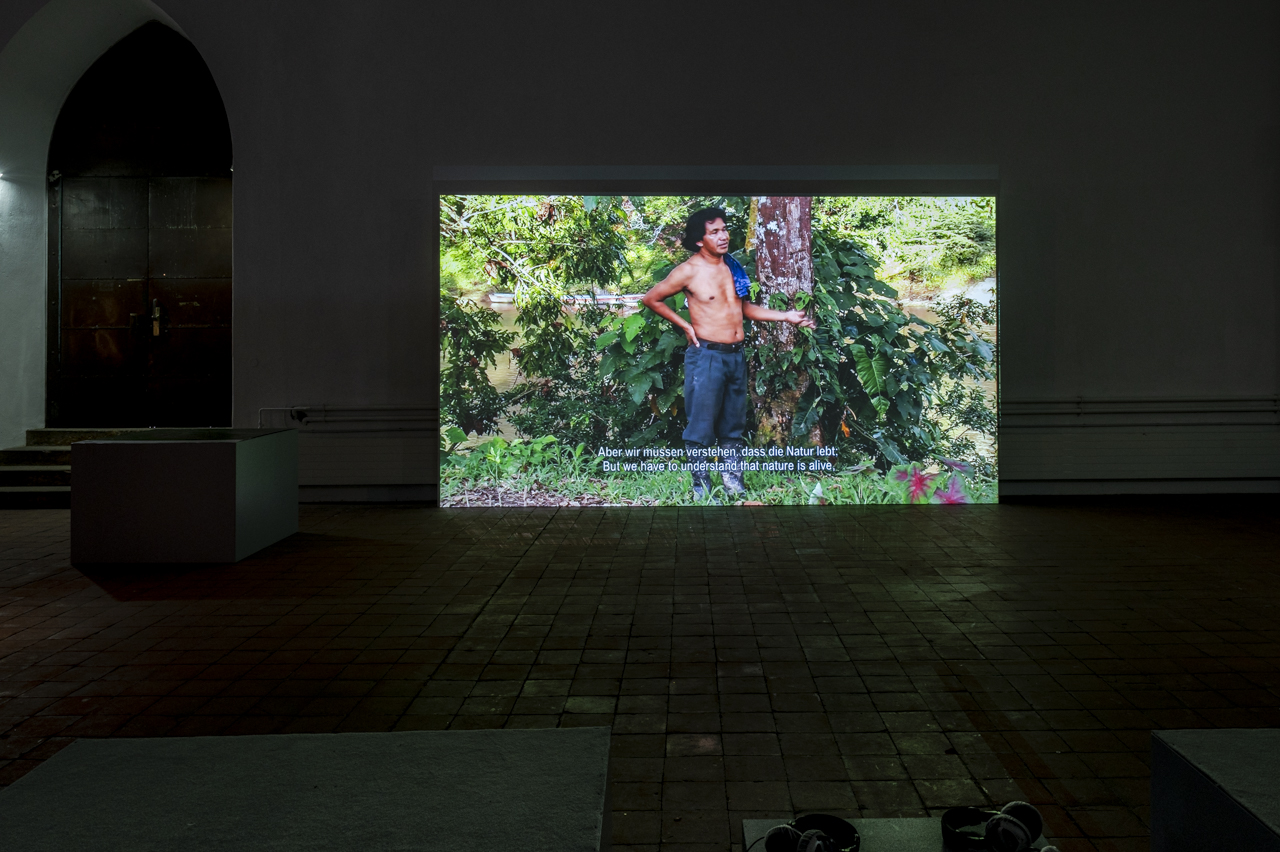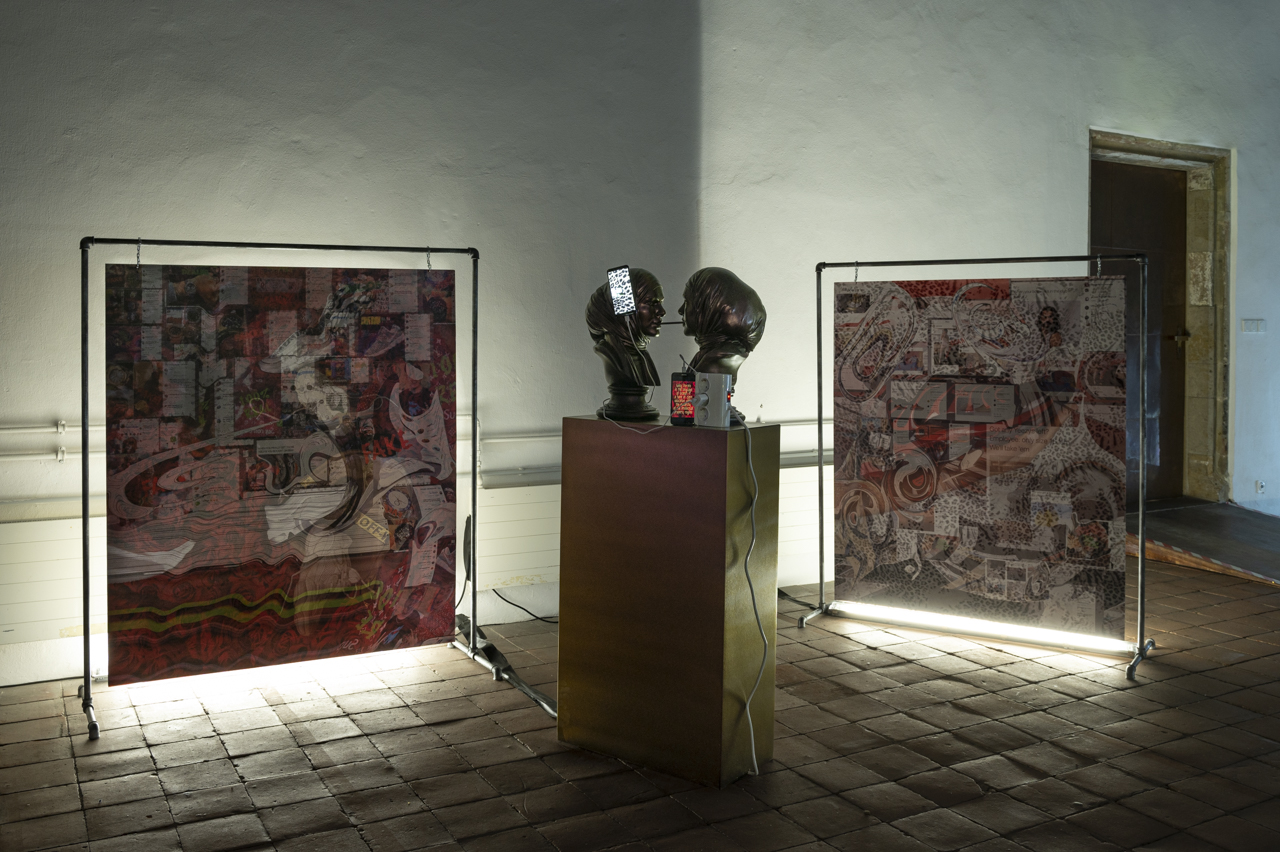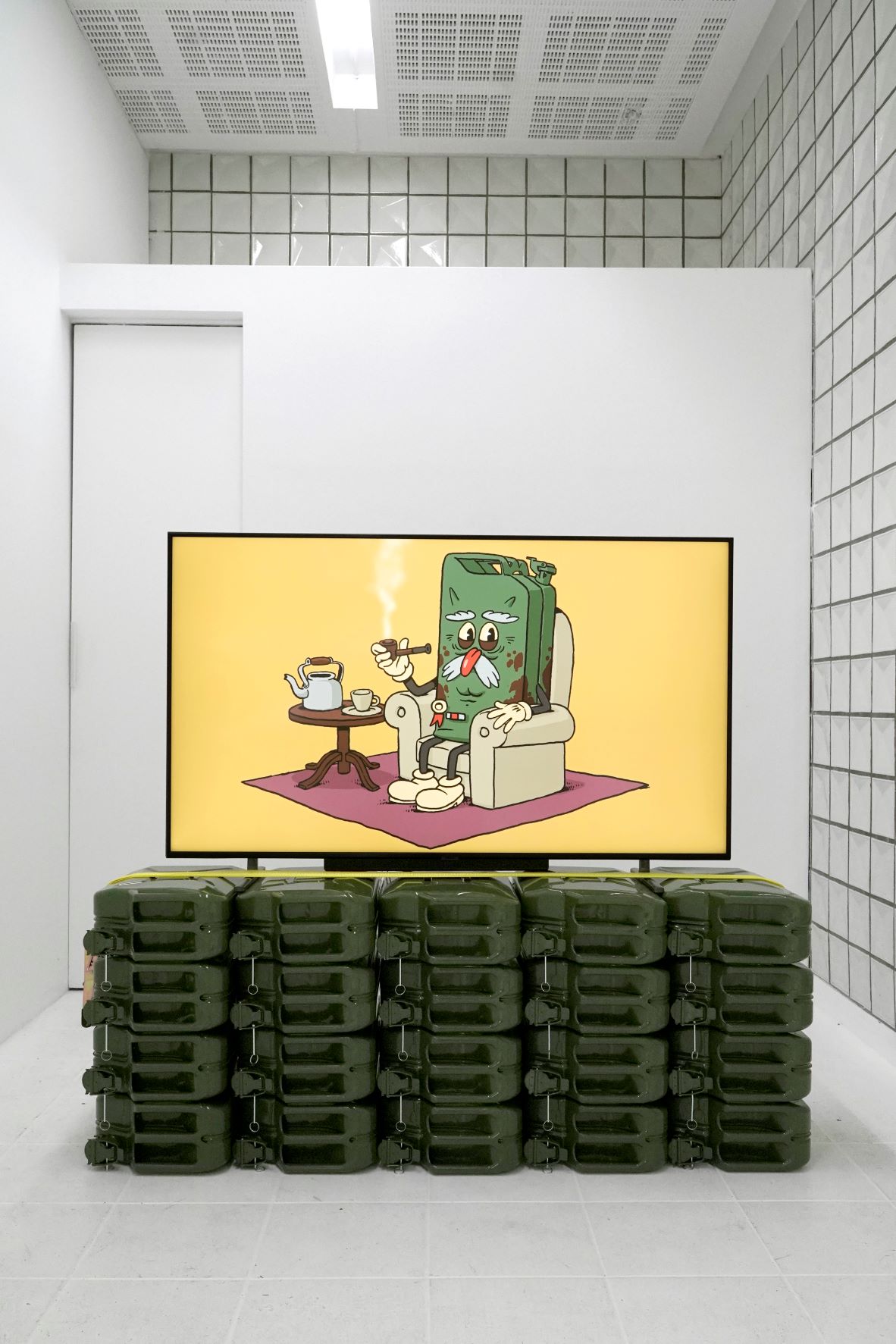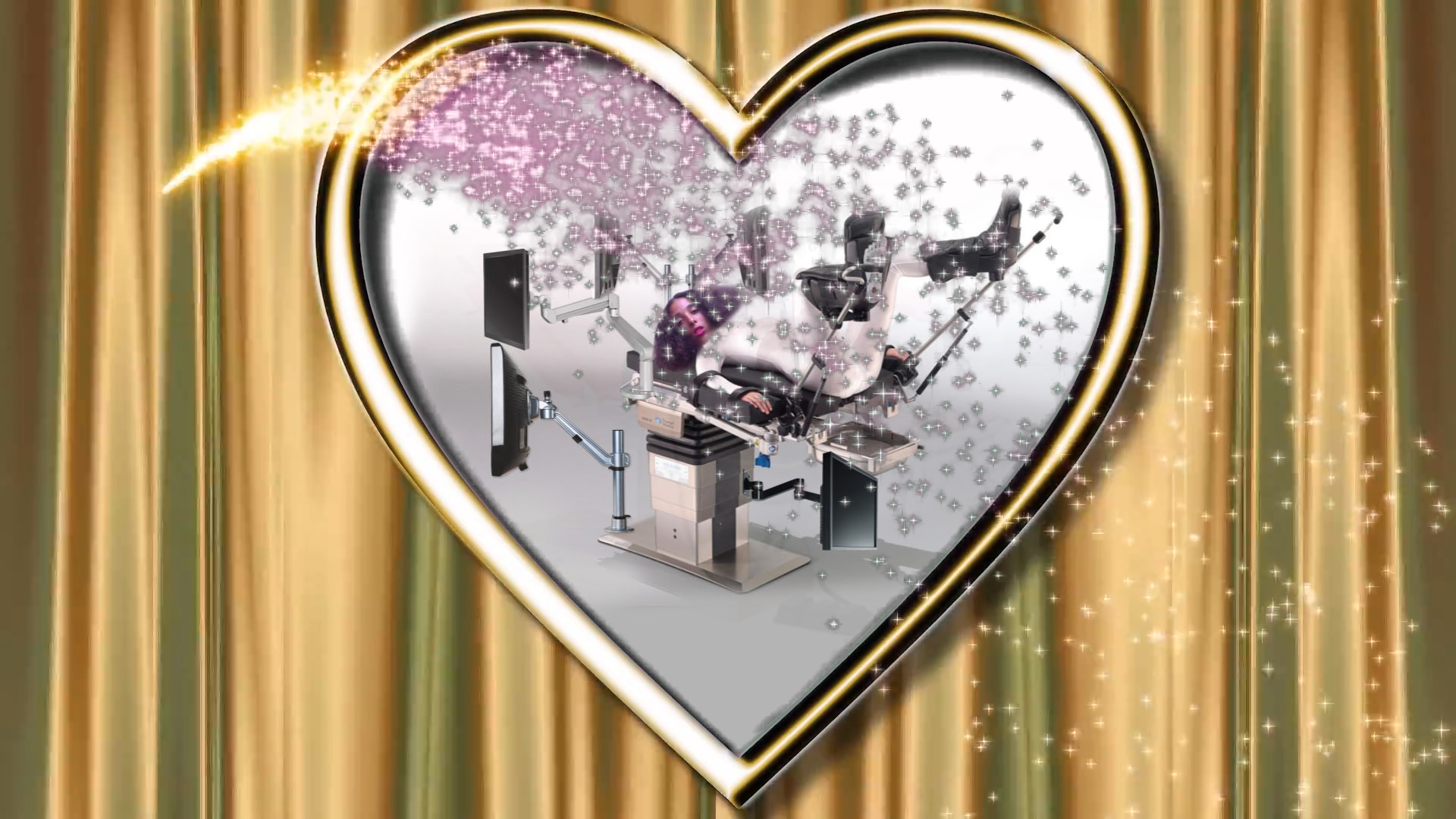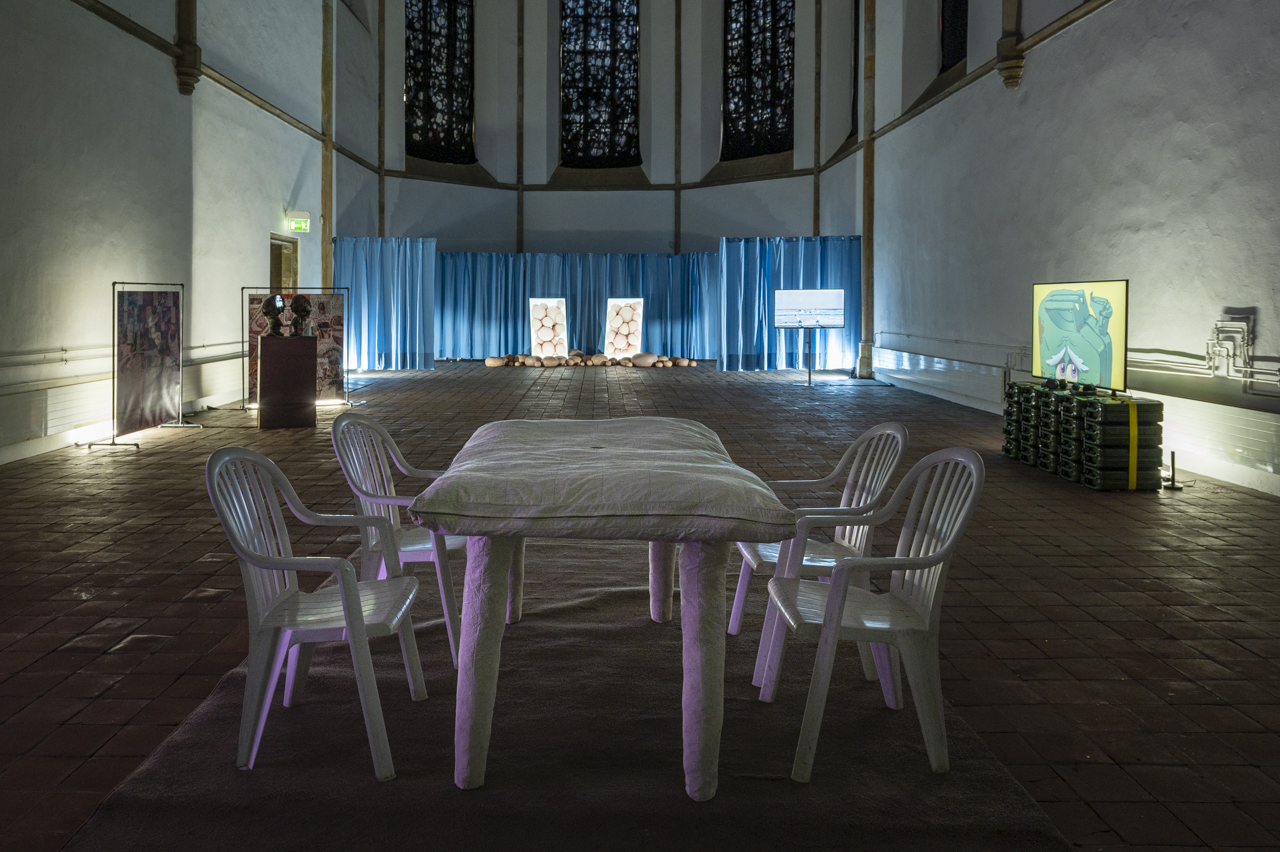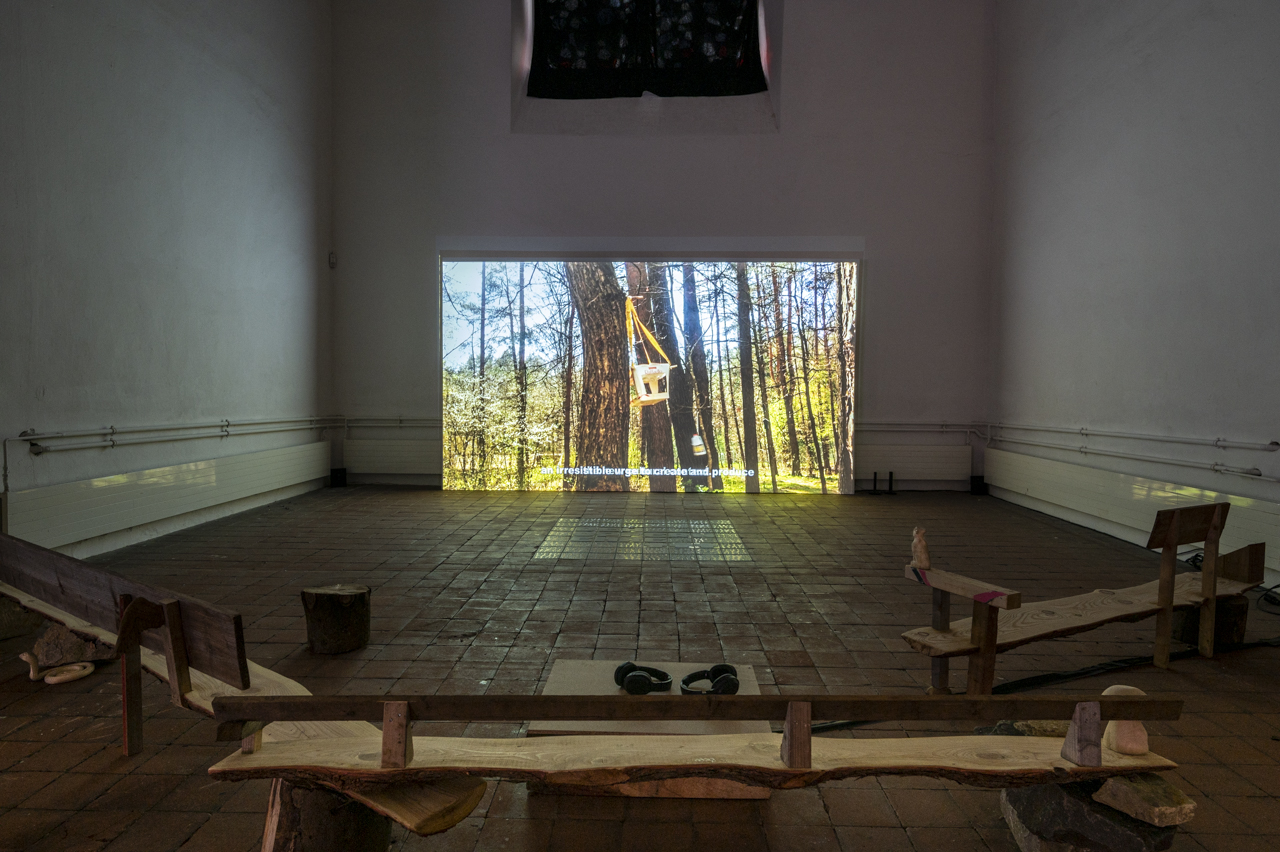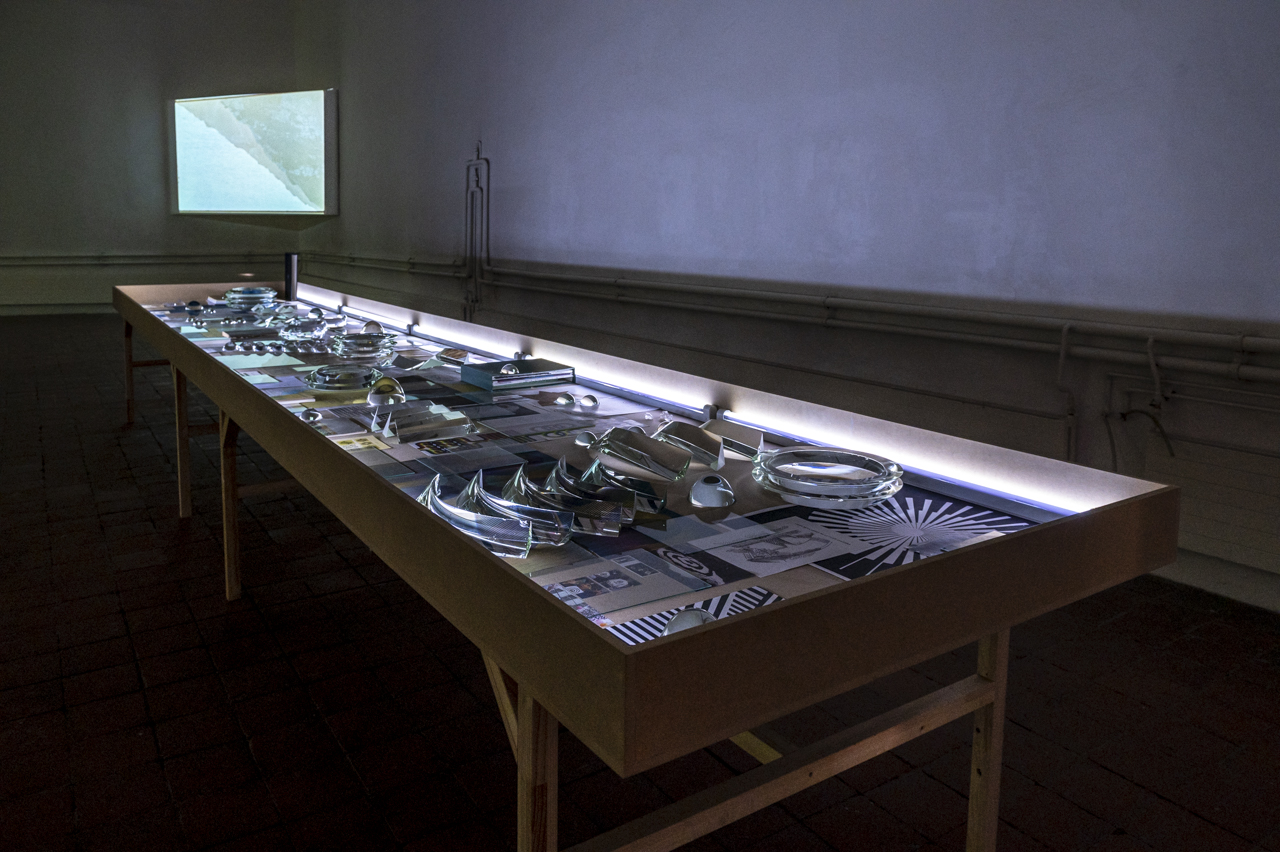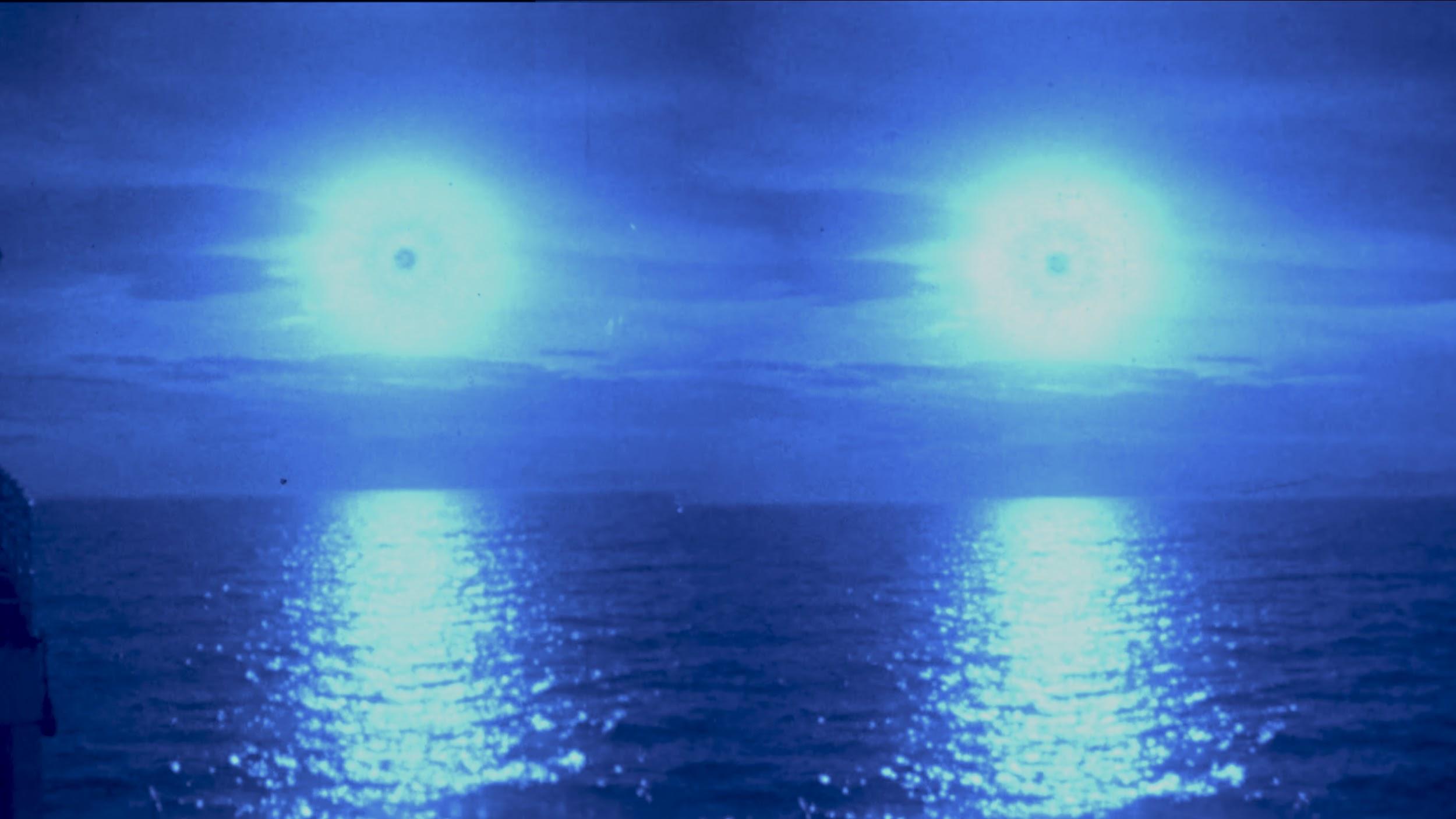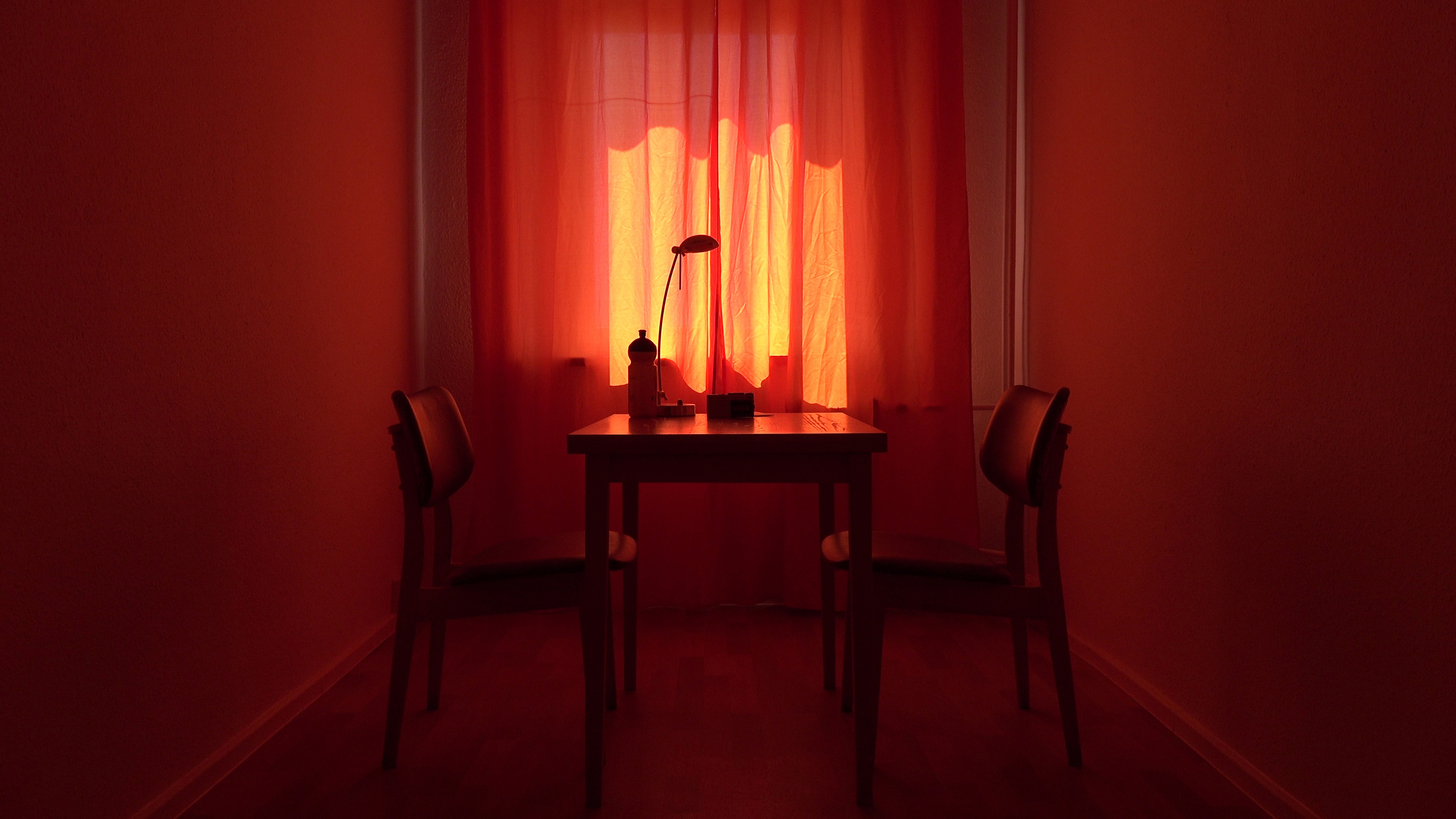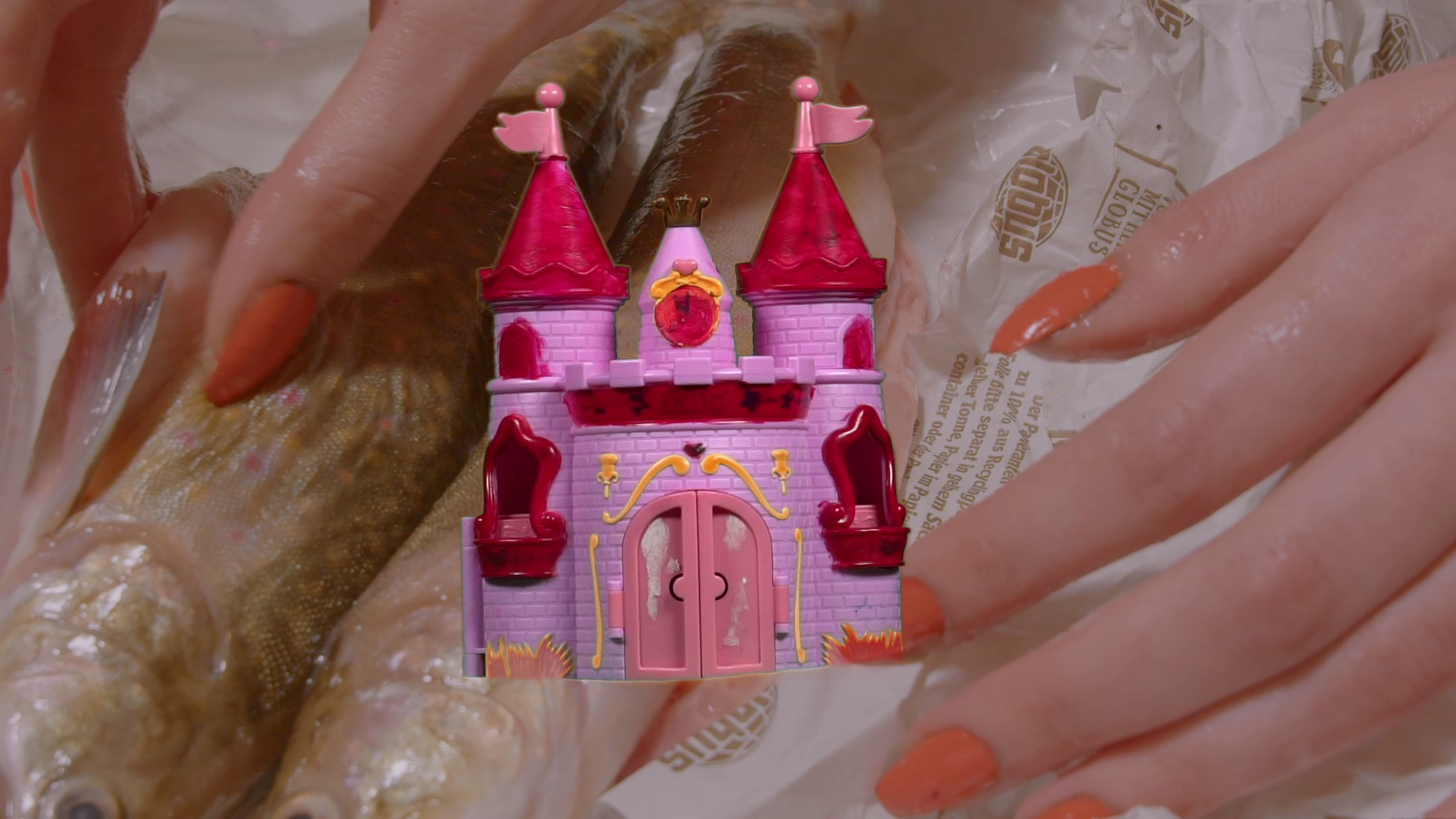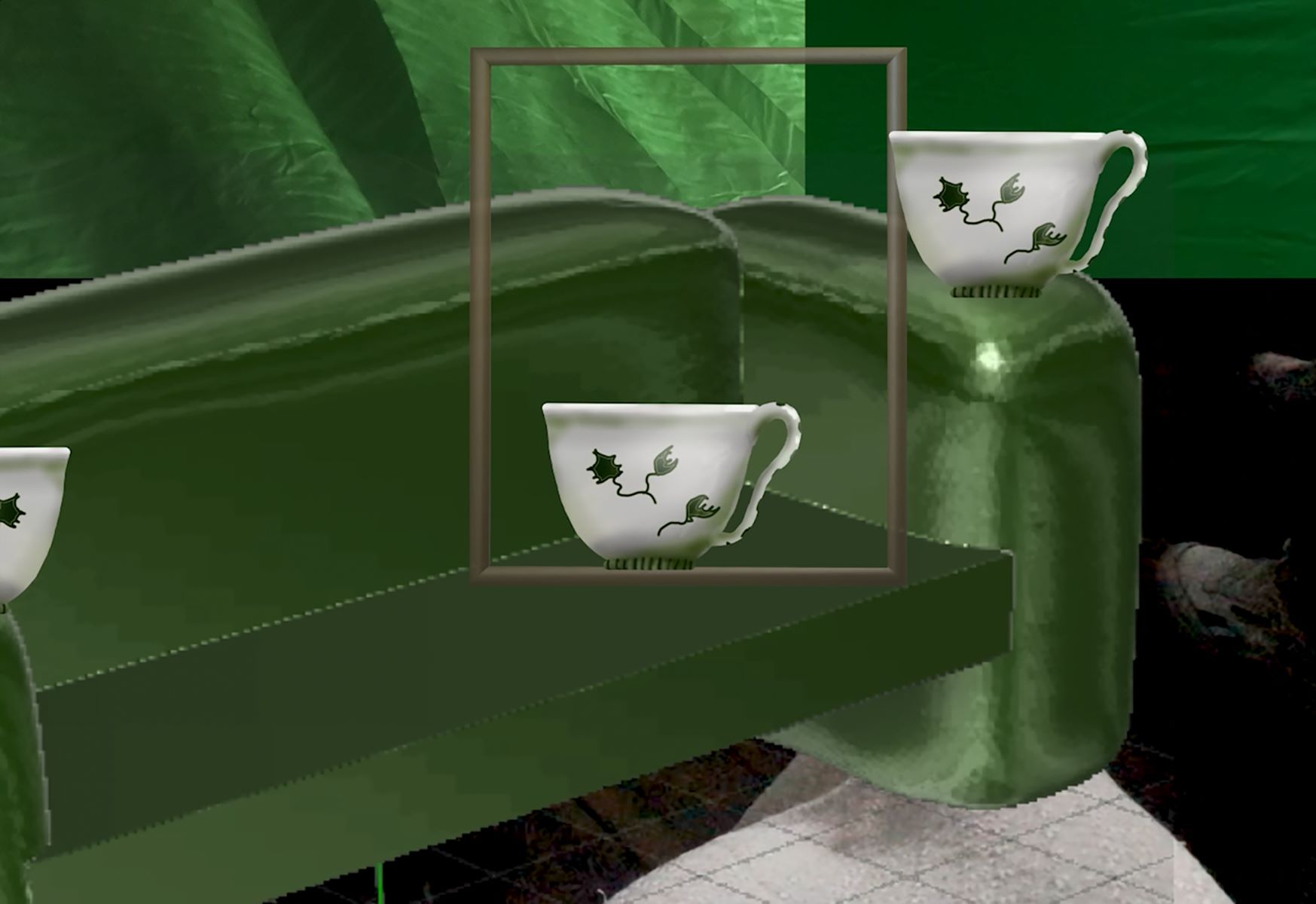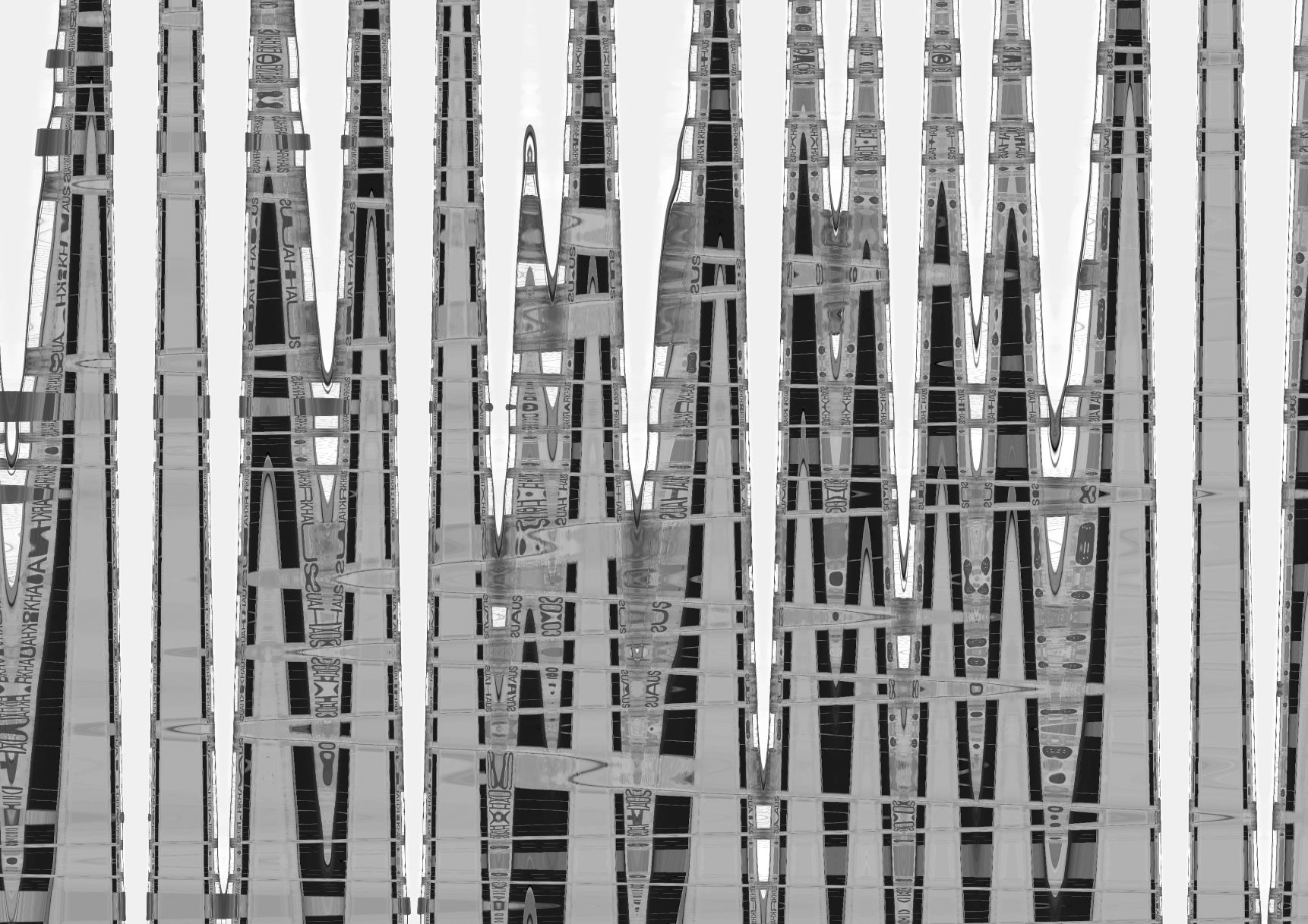Film programme
There has been a lot of speculation in the past two years about what significance cinema will probably (still) have when the audience is once again able to congregate to watch films together. For festivals like the EMAF, the cinema as a place for encounters and direct exchange between artists and audience has always played and continues to play a central role, and that much more after a forced break of two years. We would therefore like to celebrate our return to the festival cinemas with you with a multifaceted, sensuous, and ambitious programme. Many of the artists participating in the programme will be on hand to present their films and discuss them with us.
The films of the International Competition are a central focus. The eight programmes provide an overview of the diversity and current developments in the field of experimental and artistic short films. They take a critical look at the built and natural spaces in which we live and trace the stories embedded in them. They interleave personal memory, literature, and legends to paint a new, multi-layered picture of our present. They search for forms for putting handed-down knowledge in circulation anew – using the means of song, dance, and music. They play with film as a medium of illusion and spectacle and experiment with its material characteristics and narrative possibilities. They thus make it possible to experience the cinema space as a space of shared sensual experience.
The six contributions to the Feature Films section share an interest in the complex relationship between the body and politics. What are thus concerned, for instance, are the possibilities to express one’s own identity in and through language, to evade external attributions, and to have one’s political concerns heard, or also the material conditions under which reproductive work (and emancipation from it) take place today. In another case, a recurring dream of the filmmaker becomes an occasion for him to look for traces of the past, whose upheavals continue to have an impact today, in home videos of his own family. Finally, a classic of the queer-feminist avantgarde cinema of the 1990s and a polyphonic new version of One Thousand and One Nights based on the love journal of the filmmaker redraw the boundaries between individual and collective bodies.
Artists are ever more frequently choosing documentary means to address the political and social reality of the present or the pictures and narratives of the past. This is also reflected in the film selection for EMAF. In the series Implication. On Documentary Ethics, we would like to address some of the ethical questions that arise when working with documentary material. For this, four artists from the international competition were invited to choose films that shed light on the topic from various perspectives and to discuss them with the audience. It is thus about working with and appropriating found material, depicting closeness and intimacy, dealing with politically motivated censorship, and questions of access and publication.
The film programme responding to the festival theme The thing is was put together by Sirah Foighel Brutmann and Eitan Efrat. It’s rather a verb brings together current and historical works that focus on things as process, action, and interaction. They take a look at the soft, mutable contours of things, their openness to and ability to be shaped by other things, but also by experiences of violence, care, and community. In particular, they thus deal with the dynamics and permeability that film facilitates as a time-based medium. In addition to seven film programmes, It’s rather a verb also includes a live performance that can be experienced at the Kunsthalle Osnabrück.
Two film artists whose works have received a lot of international attention and been shown at renowned exhibition institutions, but have been represented to a lesser extent at festivals are honoured as Artists in Focus. The Puerto-Rican artist Beatriz Santiago Muñoz is presenting a broad selection of her filmic works for the first time in Germany. They bring together documentary, fictional, and performative elements so as to shed light on the natural and political landscapes of the Caribbean, the history and present of anticolonial movements, and the aesthetically and socially subversive power of feminist storytelling. Emily Wardill, whose film Night for Day was awarded the EMAF Award last year, provides insights into her filmic works of the past fifteen years. In these, the instability of language and consciousness, the spectres of technology, and the materiality of memory are recurring themes. Her extremely sensuous experimental films make use of a very idiosyncratic mixture of scientific discourse and absurd wit, political analysis, and playful allusions.
Conversations
Competition
Breach
Participants: Steve Reinke, Vika Kirchenbauer, Paribartana Mohanty, Sky Hopinka - Moderation: Tinne Zenner
Ripple
Participants: Chiara Caterina, Jorge Castrillo, Parastoo Anoushahpour, Faraz Anoushahpour, Ryan Ferko - Moderation: Tinne Zenner
Return
Participants: Marian Mayland, Gernot Wieland, Carl Elsaesser - Moderation: Mason Leaver-Yap
Splinter
Participants: Alejandro Alvarado & Concha Barquero, Doplgenger, Alaa Mansour - Moderation: Philip Widmann
Knot
Participants: Stephanie Barber, Carlos Irijalba, Renu Savant, Juan David Gonzalez Monroy - Moderation: Philip Widmann
Embers
Participants: Emmanuel Lefrant, Andrés Jurado - Moderation: Viktor Neumann
Pass
Participants: Jean-Jacques Martinod, Jamie Crewe, Ben Balcom - Moderation: Mason Leaver-Yap
Motif
Participants: Ingel Vaikla, Isabella Solar Villaseca, Nguyen Trinh Thi - Moderation: Viktor Neumann
It´s rather a verb
Welcome to this online discussion in the framework of EMAF’s theme programme It’s rather a verb, programmed by Sirah Foighel Brutmann and Eitan Efrat.
In this conversation we talk with film historian Sonja Simonyi about Hétpróba (Seven Trials), a rarely shown film by Hungarian neo-avantgarde artist Dóra Maurer from 1982 which we have the opportunity to show in the 7th (and last) programme.
Sonja Simonyi is an independent scholar working on the visual cultures of socialist Eastern Europe. Her work on both popular and experimental cinema has appeared in a number of edited volumes as well as the journals Film History and Third Text. The new book titled Experimental Cinema in State-Socialist Eastern Europe edited by Sonja and Kenya Gurshtein is now available through Amsterdam University Press.
Sonja is also a good friend of ours and is the one who introduced us to this wonderful film.
Together we discuss different perspectives on feminist filmmaking within the context of state socialism. About filmmaking in general, and about the unique filming space that Dóra Maurer created in this film.
We hope you enjoy.
Artist in Focus: Beatriz Santiago Muñoz
Beatriz Santiago Muñoz in conversation with Katrin Mundt about her Artist in Focus Programme 1:
Beatriz Santiago Muñoz in conversation with Katrin Mundt about her Artist in Focus Programme 2:
Beatriz Santiago Muñoz in conversation with Katrin Mundt about her Artist in Focus Programme 3:
Beatriz Santiago Muñoz in conversation with Gazelle Mba about her work:
Artist in Focus: Emily Wardill
Awards and Jury Statements
EMAF AWARD
Jamie Crewe, False Wife
The International Jury presents the 2022 EMAF Award for Outstanding Media Art to False Wife by Jamie Crewe. From the first frame, and first beat, the viewer is unmoored from their seat and catapulted from the computer screen on your lap, to the dark corner of a club, to a brief respite in a meadow, and back again to your rigid cinema seat.
Given a 10 second countdown each time to prepare, in the vein of a poppers training video we melt together, enraptured, entangled by a folkloric shapeshifter, and nothing is the same again. Our skin, our identity peels away with each encounter completing the haptic onslaught started with ribcage rattling bass.
This is a work that inventively combines layers of manipulated images, sound and text imprinting them directly onto you at a breakneck speed. False Wife oscillates our boundaries between the individual and the collective, the body and the mind, the fixity of gender and the social contract of cinema.
Dialog Award
Carlos Irijalba, Half Wet
The history of the Dialog Award originates from the German foreign ministry’s investment in the promotion of intercultural conversation. The international jury was interested in the ways this dialog could be opaque, indirect, non-existent, and eschews binaries that exist within ideologies of progress. The 2022 European Media Art Festival’s Dialog Award goes to Carlos Irijalba for the film Half Wet.
Suspended in air and submerged in water, we occupy and colonise spaces that we are not entitled to. The toxic environments become a byproduct of leisure time, escapism performed by the rich, for the cost of all. The performative and invisible labour of maintenance is pushed to absurdity, implicating the viewer in a world of quotidian futility and its attendant humour.
The jury resonated with the ways Half Wet subtly points to a disconnect between the myopia of individuated environmentalism and the postcolonial realities of those already living in a class based climate emergency.
Media Art Award of the German Filmcritics (VDFK)
Carl Elsaesser, Home When You Return
Two female biographies at the margins of the visible interweave to become a beguiling ‘women’s picture’. These women mirror one another, engage in communication, and literally imbue each other with words. Their shared physical space is a house that has been lived in for over half a century and now, after the death of its owner, is up for sale. Although next to nothing is known about the long life that had played out in the now empty rooms, the film presciently hints at the possibilities. The gaze encounters delimitations, falls on walls and windows, with yearnings resonating, including unfulfilled ones. Spoken here is a language said to make even stones cry: the language of melodrama.
In Home When You Return, a melodramatic film from the 1950s by the amateur filmmaker Joan Thurber Baldwin carries forward a phantom-like existence in the house of the filmmaker’s recently passed grandmother. Rooms, décor, textures, and objects like furniture and paintings, as well as fleeting imprints of the previous residents, become an expression of introspection, with the view of this imparted so precisely and endearingly in the process. Toying with double exposures, blurring, intertitles and rolling titles, the soundtrack from the historical film, and also sounds from the here and now, Carl Elsaesser permits past and present, filmic reality and personal history, to interfuse in a masterly way—and on 16mm film. The different temporal planes and reality levels impact each other, oscillating between impression and emotional overload. What emerges is thus a touching, intersubjective narrative about loss, grief, female role models, and the shadowy world of the domestic sphere.
The EMAF Media Art Award of the German Film Critics goes to Home When You Return by Carl Elsaesser.
Special mention
Chiara Caterina, L’incanto
For the jury of the German Film Critics Association, which presents the EMAF Media Art Award of the German Film Critics at the European Media Art Festival, it is a special honour to highlight yet another film that has made such a deep impression on the jury with its unusual artistic approach and extraordinary intensity. This film merges images and sounds that, though originally without any relation to each other, already possess a suggestive power of expression as individual elements—giving rise to a surreal synthesis of the arts, in which everything appears to be interrelated.
The film seems like a journey into the heart of darkness: voices on the sound level speak of death, murder, agony, and damnation. The stories of five women reciprocally reflect and commingle on the sound level, leading to a nightmarish crescendo at the end of the film. Also, images convey nature in its most elementary state and labyrinthine cave structures, but also an abysmal urbanity with spectral interiors and dismally narrowing corridors. The film feels like a journey into the collective subconscious. From all of these elements, the film fosters an inferno-like aura that magically captivates the electricized viewers. In fact, the title of the film aptly means ‘spell’, ‘enchantment’, ‘magic’. The jury of the German Film Critics Association gives L’incanto by Chiara Caterina an honorary mention.
Exhibition
The mass of human-made things — objects, machines, and buildings — has meanwhile come to exceed the overall living biomass on the planet. Statements about our society can be made based solely on this fact. The presence and amount of things is not only an important characteristic of the age of the Anthropocene; it also makes reference to the notion of the ‘Wasteocene’ after Marco Armiero / Yvonne Volkart. The term describes the fears articulated in connection with garbage dumps and radioactive waste sites, sorts of new geological layers, since something is always left behind. At the same time, this era is characterized by extractive and exploitative ‘wasting or disposable relationships’ with other people, beings, things, and matter.
These contexts and power structures are inscribed in the things we produce, use, desire, preserve, and throw away. Beyond their function and significance, things embody needs, interests, or ideas and make reference to the way in which we live with others and our environment. They are condensed social relationships and material witnesses to our existence, even if these never become entirely visible in the objects themselves.
If we take a look at our relationship to objects, it quickly becomes apparent that it is not really that clear where our body ends and the inanimate world begins. We are shaped by the things around us, not always quite as obviously as, for instance, in connection with our computers and mobile phones. Do we give objects life or do objects allow our body to express itself? People and things configure each other reciprocally; their interactions are forms of physical, social, political, economic, and ecological negotiations.
The question of whether we can truly comprehend the things around us as purely passive, inanimate, mute objects thus arises. Quasi-objects and hybrids like artificial intelligence, frozen embryos, or psychoactive substances complicate our relationship to things. How would we deal with feeling machines? What does it mean if nature, as, for instance, in the form of the rainforest, is given the status of a legal subject that is able to defend itself against extractivism and pollution? Where do we draw the boundaries between object and subject, nature and society, technology and body?
At the same time, people and living beings are deprived of rights and treated like things in asymmetrical power relations such as slavery, economy, animal husbandry, medicine or in gender relations. Othering and objectification in the commodity form makes everything consumable, and forms the basis for exploitation and disposable relations.
The artists in the exhibition The thing is seek alternative notions of being in the world — away from those that focus exclusively on humans. They consider how we can design, produce and consume more sustainably, so that human-made things are fully integrated into the earth’s metabolism. To do this, they sometimes use archaeological materialist or speculative approaches, consider the relationship between body and thing from a queer, disabled perspective, play with object-subject relations as well as shifts in meaning, or experiment with the design of self-decomposing objects.
KOMPOST
In the framework of KOMPOST: Nourishment for the Mind, a joint project by Popfabryk, Media Art Friesland, the European Media Art Festival, and New Noardic Wave, ten German and Dutch filmmakers, visual artists, composers, and music producers came together for joint exchange.
‘Try to describe a place’ / ‘Versuche, einen Ort zu beschreiben’
In August 2021, the ten participating artists took this task as a starting point for approaching their surroundings, Friesland in the Netherlands, with auditory, visual, and haptic works. Try to describe a place / Versuche, einen Ort zu beschreiben portrays what moves the residents of Friesland and how this has changed along with its context, processes the sensory impressions and ideas of the artists, and poses universal questions with respect to identity and belonging.
Talks
Things matter. They matter for the role they play in everyday life, but also for the material and immaterial traces they leave behind. Understood as material, inanimate objects, they have their own life cycles, and they gain or lose value and significance depending on different time periods and cultural contexts.
Things tell stories. They narrate stories of loss and belonging, past and present, reality and fiction. Things can reveal positions of power and moments of resistance. Often, they might involve hierarchies, imply forms of exclusion and serve as witnesses of events and actions.
Things are never just things. They might be human-made or found in the living environment. Some are designed and manufactured, while others might be aggregates, formations or even living organisms. All, however, are made of matter and earth’s resources and return to the planet’s body.
Things have agency. Smart things can hear and speak, monitor moves and capture emotions. Non-human personhood is addressed nowadays in relation to the changes that artificial intelligence brings but it is also a recurrent issue concerning the personhood and the rights of ‘nature’, its ecosystems and entities.
But then what is – and what is not – a thing? What does a world of things signify today, and for whom?
The talks programme of EMAF 2022 explores what it means to live with and take care of things while having in mind different temporalities, ontologies and worldviews. It examines the role of art, design and technology in creating, appropriating or calling off things in order to establish or restore substantial relationships to the environment and the planet. Talks specifically discuss the challenges and possibilities of designing for multiple worlds, of working and living with smart infrastructures, of acknowledging the agency of the living environment, and of respecting the circle of matter. Reflecting upon the connectedness of the living with the nonliving, theorists and practitioners invited by ΕMAF 2022 will discuss the meanings, benefits and costs of things in relation to both human and more-than-human worlds.
Campus
The festival section EMAF Campus offers a fascinating platform for classes and specialist groups of European art academies and universities. Students from Vienna, Amsterdam, Halle an der Saale, Braunschweig, Bremen, and Osnabrück enliven the festival cinemas and various locations in the city centre of Osnabrück with their own film programmes and multifaceted exhibitions.
The programme AMATEURINNEN* arose from the collaboration between the Austrian Film Museum and the department of art and digital media of the Academy of Fine Arts Vienna. Works by women* from the holdings of the film museum served as the starting point. The screening includes films by students that examine these works’ artistic strategies and feminist, political potentials.
In the Amsterdam Film Academy’s new degree programme for artistic research in and through film, research and debates, experimentation and process stand in the foreground. Students present works that examine personal memories, the relationship between the individual and the collective, and the power dynamic of shifting gazes.
The specialist time-based arts class of the Burg Giebichenstein college of art in Halle regards itself as a research team. The participants translate their ideas and contents into narrative and experimental films, sound, built and media spaces, body and movement, and the material and the immaterial with various means and media and thus develop an independent artistic language and position.
A political and simultaneously experimental approach is central to the specialist spatial concepts class of the HBK Braunschweig. The students enter a past archive with a sensual gaze, return to the political present with critical forethought, and create an eloquent space of current ideas.
The time-based art class of the HfK Bremen examines a visually and acoustically overstimulated world, detects not least content factories, and comprehends time as a fragile medium that forms echo chambers. Have you ever felt the need to take your screen and simple let it crash to the floor? There are reasons for this, which are revealed in a critical, experimental way.
The Institute of Art / Art Education of the University of Osnabrück is also participating with several works. New communication and exhibition concepts are created in a robot workshop in which a telepresence robot is used in two ways. Based on a sound research project, a multi-channel installation that interweaves various acoustic works to create a collective resonance space was produced for a former multi-storey car park.

